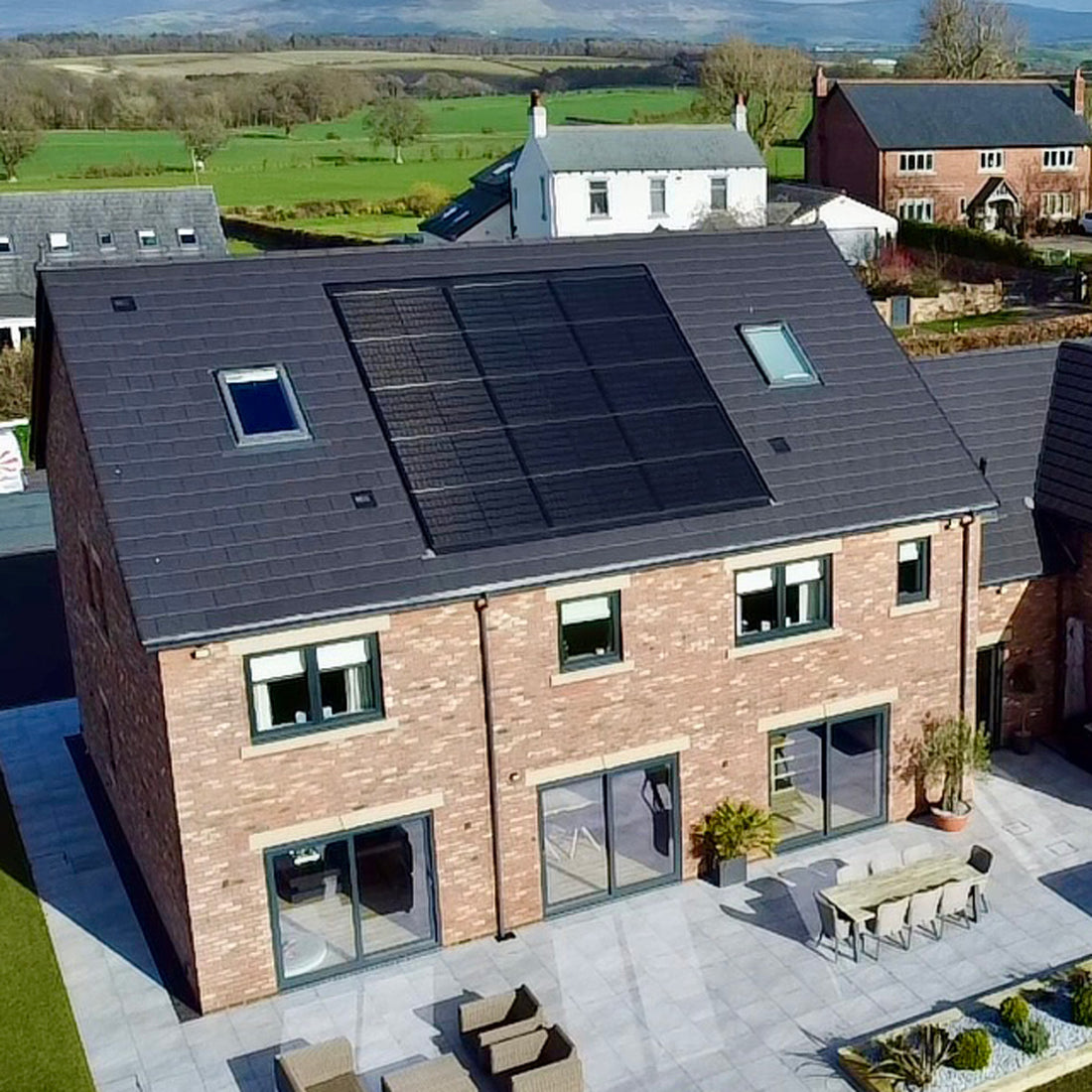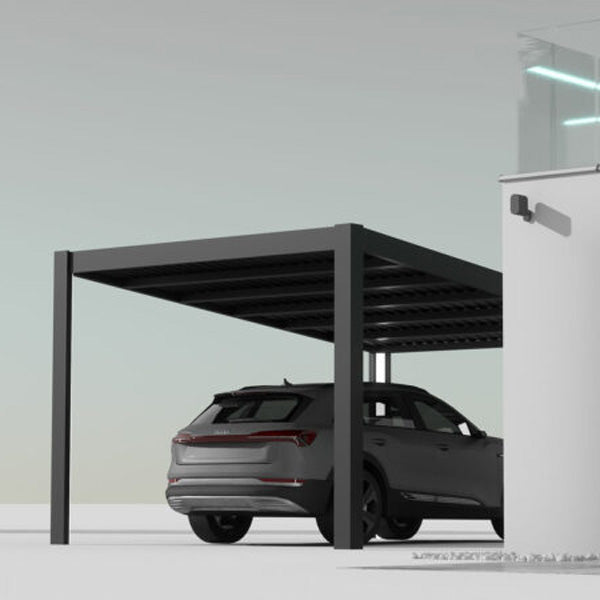Expert Help & Advice
Your guide to solar panel mountings
The mounting of solar panels is one of the most important jobs on a solar installation. The direction of the panels, the angle they face and how shaded they are all make a difference in the amount of power the panels will produce. In this guide, we will look at solar panel mounting systems, where they are used and why.
What is a solar panel mounting system?
Mounting systems are the framework used to hold solar panels in place. A mounting system consists of components like rails, brackets, clamps and hooks that ensure the panels are at the right angle and direction to catch as much sunlight as possible.

-
Does the angle of solar panels matter?
Yes, solar panels need angling to capture the maximum amount of sunlight throughout the day. The angle they are mounted at depends on where they are being installed and which way they are facing.
What angle do solar panels need fitting in the UK?
In the UK, the best direction is south, and the best angle is around 35 degrees. The average pitch for a roof in the UK is between 30–50 degrees, so panels are usually able to be fitted without any issues.
What happens if solar panels aren’t mounted properly?
Without a proper mounting system, the panels won’t be positioned or angled correctly, reducing their efficiency and leading to less energy production. If solar panels aren’t secure, they could move or shift, particularly in strong winds. Poor mounting jobs can also cause panels to come loose over time, leading to damage to the panels or even your property.
How are solar panels mounted?
There are several ways to mount solar panels depending on your needs and where the panels are being installed. Below are the different roof types and installation methods:
Pitched roofs
Pitched roofs are the most common type for residential solar panel installations. Panels are mounted to align with the roof’s angle, which naturally helps with water runoff and debris clearance.
Roof hooks
Specialised brackets are attached directly to the roof rafters beneath the tiles or shingles, providing a stable foundation.
Rails
Aluminium rails are secured to the brackets, forming the base on which the panels will sit.
Panels
Solar panels are clipped or bolted onto the rails, ensuring they are tightly secured.
Additional considerations:
The angle of the roof typically determines energy capture efficiency. Most pitched roofs fall within the optimal range of 30–50 degrees. South-facing roofs are ideal in the UK for maximum sunlight exposure, though east or west-facing roofs can also work with adjustments to the system.
Flat roofs
Flat roofs are common on commercial buildings but are becoming increasingly popular for modern residential properties. Since they lack a natural tilt, flat roof installations use angled mounting systems to position solar panels for optimal sunlight exposure.
Ballast systems
Panels are held in place using weighted frames, a non-penetrative approach that protects the roof’s integrity and simplifies installation.
Fixed-angle brackets
Brackets elevate panels to the optimal tilt (typically 10–15 degrees) for sunlight exposure.
Direct mounting
In some cases, panels can be affixed directly to the roof if structural supports are available.
Additional considerations:
- Flat roof systems may require more maintenance to prevent debris buildup.
- Layouts can be customised to optimise large, open spaces, often in rows or grid patterns.
Ground-mounted systems
Ground-mounted systems are ideal for properties with open space or roofs unsuitable for solar panels. They are easily accessible for maintenance and can be adjusted for optimal sunlight exposure.
Foundation
Panels are installed using freestanding frames anchored into the ground with concrete footings or driven poles for stability.
Tilt frames
Frames are angled to capture maximum sunlight (typically 30–40 degrees in the UK) and spaced to avoid shading from trees or buildings.
Panel installation
Panels are bolted onto the frames, similar to roof-mounted systems.
Additional considerations:
- Ground systems can include tracking technology to follow the sun’s path throughout the day, increasing efficiency.
- These systems are ideal for agricultural land or areas with limited roof space.
Specialised roof types
Certain roof types require customised solutions to ensure panels are securely and effectively installed:
Slate roofs
Specialist brackets are mounted between the slate tiles without causing damage.
Metal roofs
Panels are attached using clamps or brackets that grip the standing seams, avoiding the need for drilling.
Tiled roofs
Panels are installed with hooks that fit under the tiles and attach to the roof rafters.
If you’re looking for slate or tiled roof mounting systems, you can find them in our pitched roof section.
How to choose the right mounting system for your project
The type of roof, the weight and size of the panels and the ease of installation are key factors when choosing a mounting system. Ensure the system fits your space and can accommodate additional panels if you plan to expand.
Are there mounting systems for solar carports?
Yes, solar carport mounting systems are available for homes, car parks and forecourts.
View our range of solar carports here.

-
What is a solar carport?
Solar carports are stand-alone steel structures with solar panels on the roof. They generate clean energy that can power your home or business or charge electric vehicles while offering protection from the elements.
How can solar carports benefit a business?
- Increase on-site energy generation
- Charge electric vehicles and company cars
- Create a new revenue stream
- Promote green initiatives
Can mounting systems offer bird protection?
Nesting birds can cause damage to solar panels, system cabling and roofs. Options like bird guards, mesh or brushes can clip onto the panel’s frame to protect the system.
Can I install a solar panel system myself?
Solar panel systems require careful planning and configuration. We recommend hiring a qualified professional.
What equipment is needed to mount solar panels?
To secure your solar panels safely, mounting solutions include clamps, end caps, flashing, tools, connectors, rails, roof hooks, screws, fixings, standing seam clamps and protectors.
How do you maintain solar panel mounts?
- Check for wear, rust or loose fittings
- Inspect for bird nests that may cause damage
- Clear debris like leaves from around the mounting system










